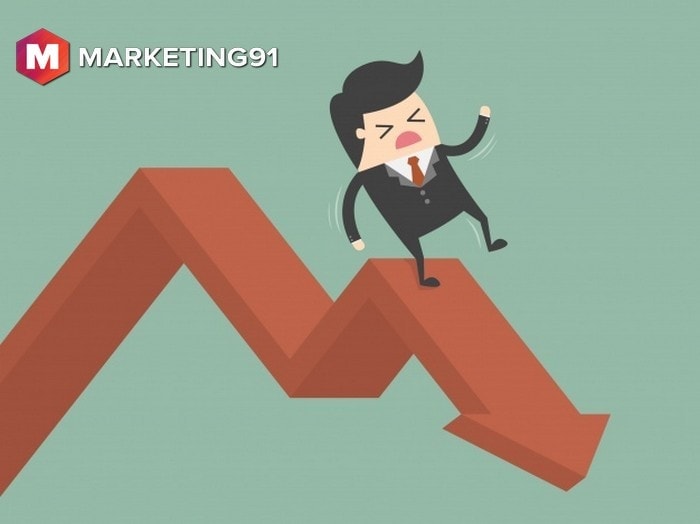Distribution centers or warehouses are generally used to store and segregate the incoming raw materials and intended for further processing.
The main role of a distribution center is to centralize the order fulfillment services. They are also known as shipping centers and are integral part of virtually any e-commerce company that ships products directly to customers.
Table of Contents
What is a Distribution Center?
The distribution center is defined as a specialized place in a building or a warehouse which is stocked with the goods or products that are to be distributed to the resellers or the wholesalers or in some cases directly to the end customers.
The distribution center is often accompanied by air conditioning or refrigeration system, depending on the nature of the product, to preserve the stocked goods intact.
Distribution centers are often thought of as being dependent on the demand in the market. At times the distribution center is also referred to as a warehouse or a fulfillment center or package handling center.
Distribution centers are considered as the foundation for supply network because a single location is allowed to have a huge stock of multiple products.
In some organizations, a single facility is used to operate as both direct to customer as well as to distribution system. The primary objective of the distribution center is that it supplies to multiple resellers around the location of the distribution center.
Difference Between a Warehouse and Distribution Center
The primary difference between a warehouse and distribution center is in the time of storage and operation. In the case of the distribution center, the turnover is faster, that is the time between receiving, and shipping of goods is less, but in the case of the warehouse, the time is longer.
The difference between a warehouse and distribution center is that the distribution or fulfillment centers has a larger capacity than the warehouse.
A warehouse is used for storing goods before they are sold, while a distribution center can be used for storing and packing goods as well as distributing them.
Why Do Companies Use Distribution Centers?
Companies use multiple distribution centers for several reasons. First, they can help to keep the costs of transporting goods down by providing a nearest distribution center where goods are shipped from one place to another.
This is especially important for ecommerce companies that sell their products online, because shipping costs are often much higher than those associated with traditional brick-and-mortar stores.
Another advantage of using own distribution networks is that it allows companies to have more control over their inventory management system and reduce the amount of time spent on ordering new stock and restocking shelves.
Finally, distribution centers allow companies to have more control over their supply chain and make sure that they have enough product available at all times.
How Distribution Centers Work?
A distribution center is a warehouse that stores, picks, packs and ships products to customers. It’s the place where all distribution activities take place and is located at the heart of the supply chain.
The products are stored in crates and boxes on shelves at the distribution center. The goods are then shipped out to individual stores as needed. The process of getting goods from the distribution center to individual stores is called “distribution.”
Distribution centers are located in strategic locations near the customers they serve. This makes it easier to get products out quickly and cheaply. The distribution center uses a variety of different tools, such as forklifts and conveyors, to move goods around so that employees can pack orders for shipment. They also use scanners to track inventory and ensure that all items are accounted for at all times.
Role of Distribution Centre in Supply Chain
The concept of supply chain management has been changing over the past few years, which is why the role of the distribution center is very important in maintaining the proper supply chain. Following is the role of a distribution center in supply chains:
- The more the distribution centers, the lesser will be the number of warehouses of the organization. The distribution center is for temporary holding of goods and products, which is why more the distribution centers the lesser will be the number of warehouses.
- The primary emphasis of distribution Centre is not on the storage of the goods but the flow of the goods. Distribution Centres ensure that slow-moving items are eliminated and options it stocks are either consumed or returned to reduce inventory.
- Better economies of scale are achieved for clients if the outsourcing of distribution Centre or warehousing activities are done.
Apart from these roles, other functions of the distribution Centre include
- The distribution center acts as a terminal which is used to make a bulk for break the bulk in order to further transport it. The larger bulks which are incoming are broken down into smaller bulks which are then transported to the respective shipments. Similarly, the smaller bulks in some cases which are arrived at the distribution Centre are assembled and made into larger bulks and then forwarded accordingly.
- Distribution Centre also acts as a node for inter-dock or intra-dock operations. Docking is loading of the goods for transportation within the distribution Centre or transportation outside of the distribution center. Sometimes when a product is received similar products going to some other destinations are packed together and then shipped. Distribution Centre acts as docking Centre were products of similar destination are grouped and packed together.
- Distribution Centre can also be used as an assembly facility where primary or secondary assembly of the product can be done before shipping. For example, a bicycle before transporting can be assembled battery and then distributed accordingly.
- Distribution Centre also acts as a depot for returned canceled or bad goods. The products which are return canceled are brought 1st to the distribution center and then transported to the proper warehouse or the manufacturing facility. Most of the goods from Amazon are brought to the distribution center before returning it to the manufacturer.
Costs of Using Distribution Centers
The storage costs of using distribution centers are relatively low compared to the cost of shipping directly from suppliers to customers. The main reason for this is that distribution centers allow ecommerce companies to buy in bulk, which reduces the costs per unit.
Another advantage of distribution center planning is that it allows you to reduce your inventory costs because you don’t need as much stock on hand. This also helps reduce the risk of having too much or too little inventory on hand at any one time.
Types of Storage Used at Distribution Centers
There are many different types of storage used at distribution centers. The most common is the pallet, but there are also other types of storage that can be used in a distribution center. These include:
1/ Pallets
Pallets are one of the most common types of storage used in distribution centers. They allow products to be stacked and organized so that they can easily be moved around.
2/ Stackable Containers
Stackable containers are another type of storage that can be used in distribution centers. These containers are made from plastic and come with lids that seal tight so that it’s easy to store items inside them without worrying about them getting damaged by water or dust particles floating around on occasion.
3/ Rolls
Rolls are another type of storage that can be used in distribution centers because they help organize items so they don’t get lost or misplaced easily when being transported from one place to another over time (such as when someone comes into contact with something like this).
4/ Crates
Crates are an easy way to store heavy items like machinery or machinery parts, as well as delicate items like glassware or food items like fresh produce (although not fruit, which needs to be refrigerated).
Advantages of Distribution Centre
Having a distribution Centre has many advantages to the organization as well as to the customers. Following are a few of the advantages:
#1 Convenience of the customer
Having a distribution Centre has a lot of customer convenience in case of shopping. It is not possible for every manufacturer to open the grocery store and cater the customers, which is why the companies have started distribution centers and warehousing facilities.
Managing so many end customers would add to the multiplicity of the operations and make the organization more chaotic.
Having a distribution Centre is much more convenient for the customer satisfaction as well as to the organization because the number of customers is far more than the number of distribution centers that your organization has to manage.
#2 Time and cost-saving
The distribution centers are specialized centers in their performance and their operations, which is why they are lower in cost to maintain by the organization. Apart from saving cost, distribution centers also save time by increasing efficiency in the operations and making a delivery is much faster.
Hundreds of trucks would line up outside the distribution center to pick up the products from the manufacturing facility to deliver them to the distribution center. The manufacturing facility may not have enough storage facility for the products.
Having a distribution center also breaks down the bulk shipments in smaller shipments to cater to the bulk of the customers. This is the way the cost will be saved.
#3 Retailers can buy the products in small quantities
Buying the entire bulk from the manufacturing facility will be too costly as well as very cumbersome for the retailers who are why breaking up in smaller bulks helps the retailers to sell the individual products to the customers.
Then the customer can buy the product or goods in small quantities as and when required and they are required to have to deal with the storage issues.
This way, even the middleman can make the profit as well as the organization.
#4 Financial Support
The retail stores or resellers because of their bulk breaking make payment options easier for their customers, and the customers themselves can buy a single product.
#5 Valuable information from resellers
Resellers provide important information which is used to improve the product and in turn increase the sale of the product because resellers are the one who is in direct contact with the customers and the feedback is passed via them to the organization, and the organizations can take a feedback from the customers it is not possible to reach, each and every customer which is why having a distribution Centre plays an important role.
Disadvantages of the distribution center
#1 Communication control losses
Apart from the cost of revenue, the manufacturer also losers communication control as to what communication of the product should be conveyed to the final customers.
This happens to increase the sales of the product and communicate about the product to the end customers.
#2 Loss of revenue
The manufacturer sells the final product to the resellers for intermediaries at a cost, which is lower than the maximum retail price.
The difference between the cost of middlemen and the maximum retail price is what the cost of the middle man is. This causes revenue loss to the organization.
The organization can itself have a distribution center and lower the intermediary costs.
Liked this post? Check out the complete series on Distribution


